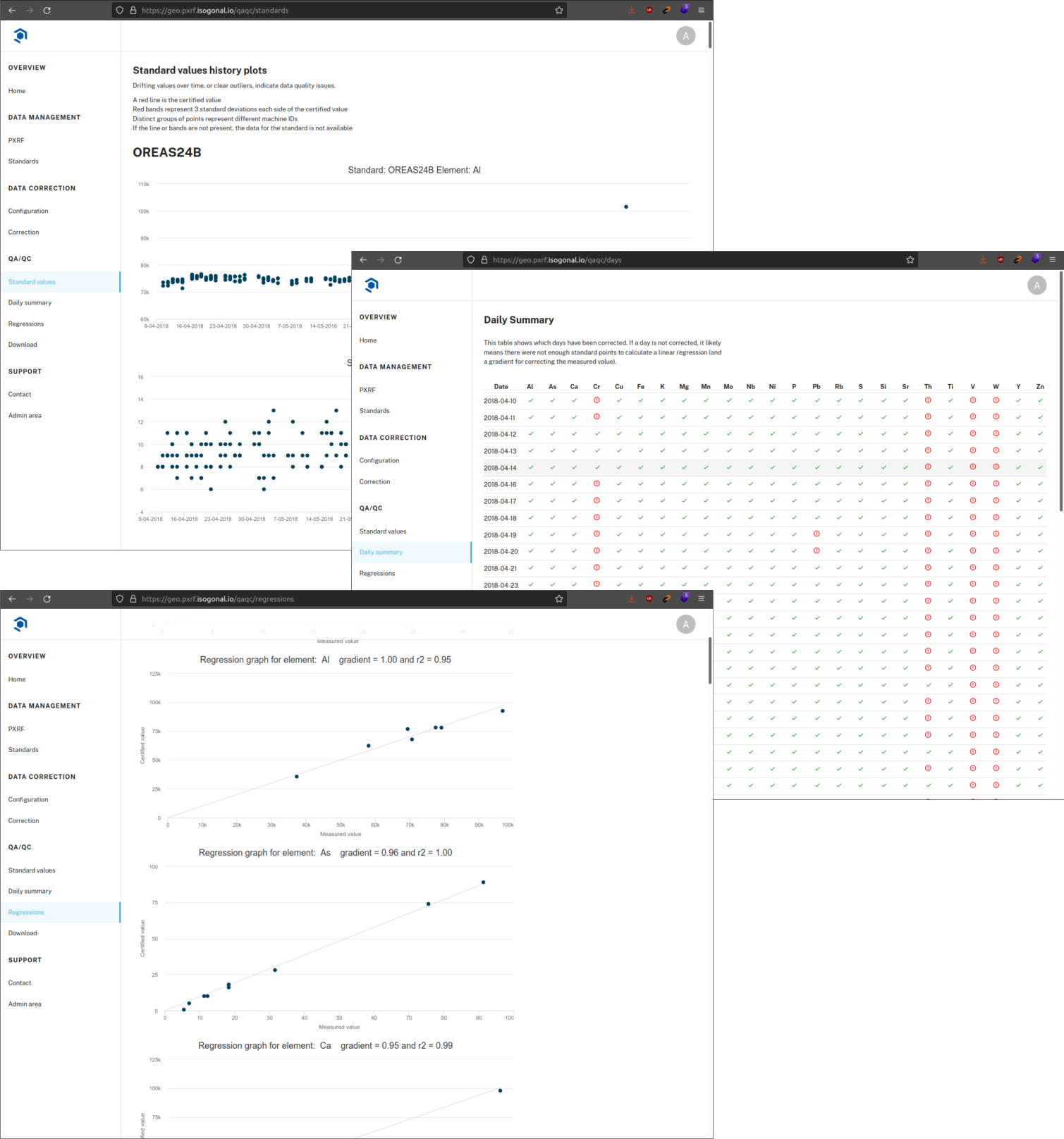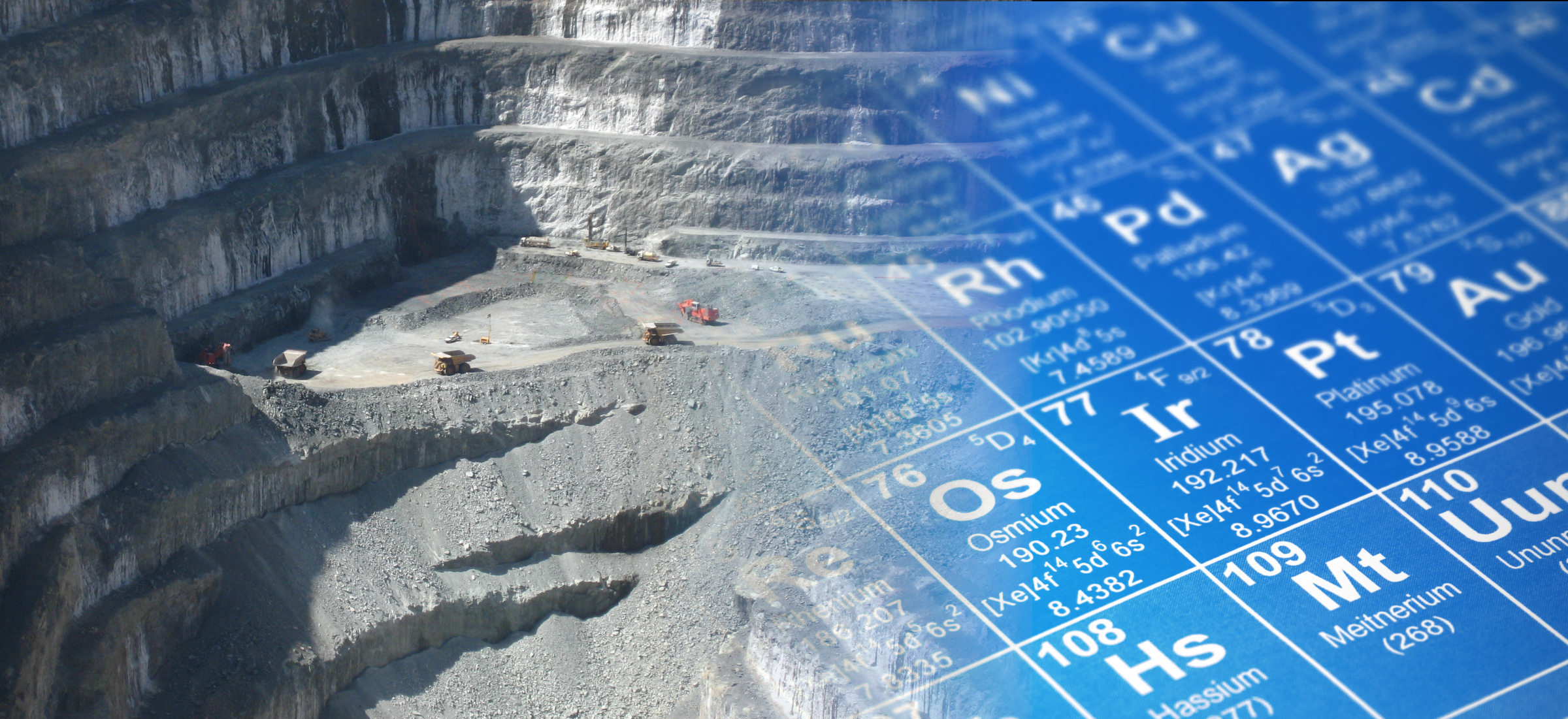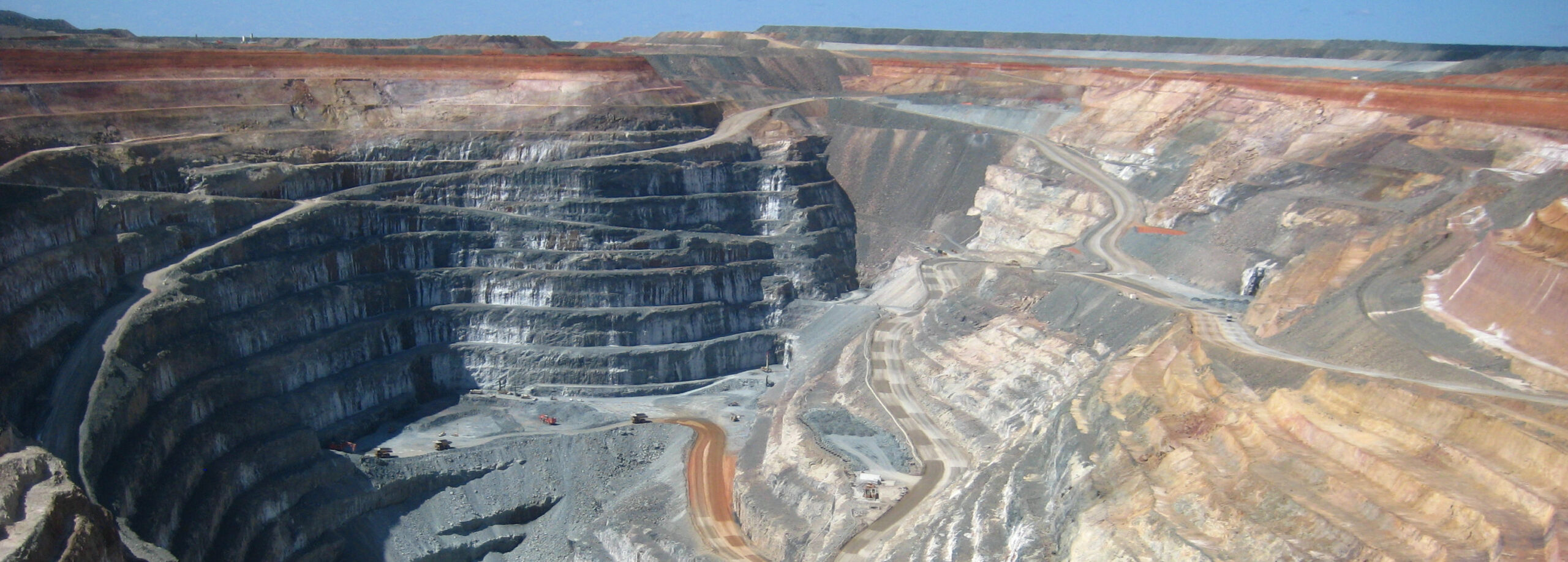pXRF machines drift. Is your data corrected?


How it works
Upload your certified standard values
Upload files from the pXRF machine, including sample IDs
Download corrected data and QA/QC reporting
Features
- Standards analysed together with the samples are used to calculate the correction factors
- The algorithms used are given in these papers:
- Use linear or reduced-major-axis regression
- Complete control over the standards and calculation configuration used for each element
- Configure the correction acceptance criteria, e.g. 0.9 > m > 1.1 and R2 > 0.8.
- Organize data from different machines or locations into Projects
Fisher, L., Gazley, M.F., Baensch, A., Barnes, S.J., Cleverley, J. & Duclaux, G., 2014. Resolution of geochemical and lithostratigraphic complexity: a workflow for application of portable X-ray fluorescence to mineral exploration. Geochemistry: Exploration, Environment, Analysis, 14(2), pp.149- 159. PDF
Gazley, M.F. & Fisher, L.A., 2014. A review of the reliability and validity of portable X-ray fluorescence spectrometry (pXRF) data. In: Mineral Resource and Ore Reserve Estimation – The AusIMM Guide to Good Practice. Second edition. The Australasian Institute of Mining and Metallurgy, Melbourne, 69–82.
Used by




About
This pXRF measurement correction app was developed by Isogonal together with leading geochemistry experts. It is simple to use, works with your existing spreadsheets, and is in use by multiple exploration and mining firms worldwide.
Solutions
pXRF measurement correction
Geological data management
© Isogonal 2023


